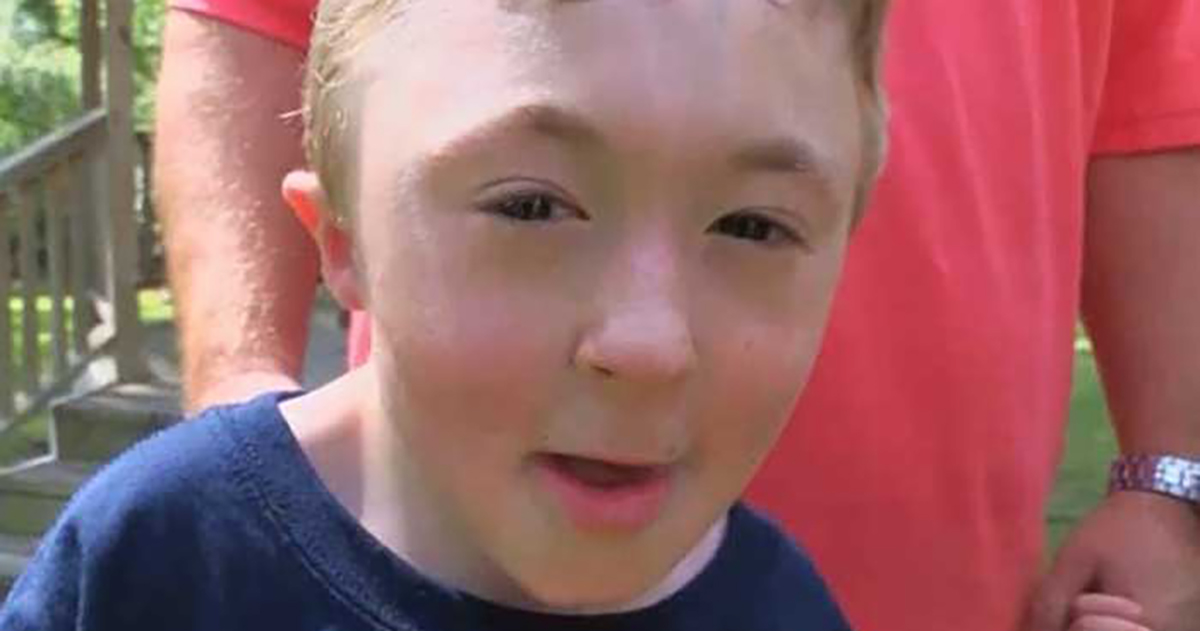Symptoms Of Aarskog Syndrome
Aarskog syndrome is a genetic disease mostly affecting males. This is due to a defective FGD1 gene on the X chromosome. Females have two X chromosomes, allowing a defective gene to be overwritten by a normal gene. Males, since they have just one X chromosome, have no normal gene to compensate if a defective gene is present. There are many symptoms associated with Aarskog syndrome, including bone and muscle abnormalities, genital defects, facial deformities, and cognitive delays. Aarskog syndrome is typically diagnosed by genetic testing in infancy or early childhood after presenting with multiple symptoms. With proper symptom-dependent treatment, those afflicted with the disease can live regular lives and have normal lifespans. Start reading now to get familiar with the trademark symptoms of Aarskog syndrome.
Distinctive Facial Features

One of the most visible symptoms of Aarskog syndrome is the distinctive facial features, including wide-set eyes with droopy eyelids. The nose is small with a broad bridge, and the nostrils are flared upward. Ears are low-set on the side of the head, and the lobes are thick and fleshy. Often, the space between the nose and the mouth is much longer than normal, and the upper jawbone is underdeveloped. This contributes to the look of a flat, round face.
Surgery and orthodontics can help alleviate severe or painful jaw deformities. Cleft lip and cleft palate are common with Aarskog syndrome and can be repaired with surgery. Individuals with this disease may have a widow's peak hairline across a broad forehead. Teeth are often missing at birth, and it may take much longer for baby teeth to come in. Tooth enamel is often underdeveloped, leaving teeth vulnerable to decay.
Keep reading to learn about more symptoms of Aarskog syndrome.
Muscle And Bone Malformations

Muscle and bone malformations can be minimal or debilitating in Aarskog syndrome. Babies are born of typical size, though growth is slow during childhood but catches up in the late teens. Individuals with Aarskog syndrome do not grow very tall. Common bone abnormalities are short fingers and permanently curved pinky fingers. Spina bifida, in which the vertebrae do not close around the spinal column, and scoliosis, a curvature of the spine, are also common malformations. Extra rib bones may be present in some cases.
Muscle malformations include congenital heart defects, inguinal hernia, umbilical hernia, and paralyzed eye muscles. Congenital heart defects can present with no symptoms or can develop into heart failure. Hernias happen when parts of the intestines push through unusual openings in the muscles that line the abdominal cavity. Some heart defects and most hernias can be repaired with surgery.
Continue for more on the various symptoms of Aarskog syndrome.
Genital Malformations

Aarskog syndrome mostly affects boys, and genital malformations in the male gland are easy to identify. Thankfully, surgery can often correct the malformation. Fertility is usually not affected. Another genital malformation is called hypospadias, where the urethral opening is located on the bottom side of the male gland. The opening can be anywhere between the perineum and the tip. Surgery can correct this, or it can be left as is depending on the location of the opening. It may be difficult to keep clean or to reproduce if left untreated.
Continue reading to identify more of the major Aarskog syndrome symptoms to watch out for.
Delayed Cognitive Development

Children with Aarskog syndrome can experience delayed cognitive development, though it has not been associated with lower IQ scores. Cognitive delays are not consistent with Aarskog syndrome diagnoses and if present, these delays are usually in early childhood and range from mild to moderate. A child’s cognitive ability is measured by how they pay attention, think, remember, and learn. Babies might take longer to reach important milestones such as responding to facial expressions, imitating gestures, and following moving items with the eyes. Cognitive delays can lead to a delay in speaking and understanding spoken language. This can end up delaying social interactions between family members and the baby. These delays in reaching milestones can be frustrating, but they do not affect the outcome of the child’s normal intelligence.
Get to know another symptom of Aarskog syndrome now.
ADHD

Attention deficit and hyperactivity disorder (ADHD) is considered common with a diagnosis of Aarskog even though it is not often confirmed on a molecular level. This means DNA and RNA sequences associated with ADHD are not checked to make a definitive diagnosis. To ascertain the possibility of attention deficit and hyperactivity disorder, three main components must be present: inattention, hyperactivity, and impulsivity. Inattention includes procrastination, the inability to finish work or chores, not being able to focus, being disorganized, and being distracted by things that others are not. Hyperactivity is the inability to sit still. Hyperactive kids are loud and do not engage in quiet hobbies or activities. They fidget, talk a lot, and are always on-the-go. They have a hard time being patient and often react before considering a situation. This disorder cannot be properly diagnosed in infants and very young children.